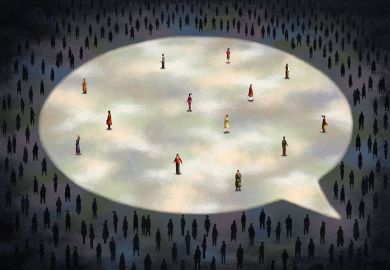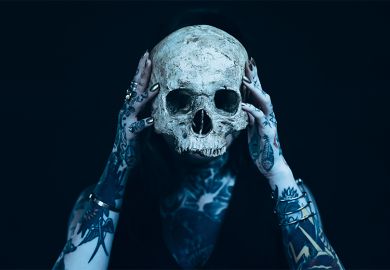Siegfried Sassoon peaked early, in the First World War. Does he really merit a long biography, asks Jeffrey Meyers
Siegfried Sassoon, the subject of this new biography, descended from fabulously wealthy merchants in Baghdad and Bombay. He was Jewish, Protestant and Catholic; homosexual, married and a father.
When he was a child, his parents separated and his father died; he was brought up by a devoted and "delicate" mother subject to nervous breakdowns. He was a mediocre student who went from Marlborough to Clare College, Cambridge, but left without a degree. Beginning in 1906, he brought out elegant editions of privately printed poems that ignored his sexual desires and adopted the aestheticism of the 1890s. Like E. M.
Forster and D. H. Lawrence, Sassoon was influenced by the crusading homosexuality of Edward Carpenter. His early mentors were Wilde's friend Robert Ross, Edmund Gosse and Edward Marsh, editor of Georgian Poetry ; his later ones Thomas Hardy and T. E. Lawrence.
Sassoon joined the Royal Welch Fusiliers when the Great War broke out and, expecting death, was recklessly brave. With the German lines only 40 yards away, he won the Military Cross during a night raid. Wounded twice - once by a German sniper, once by his own side - he walked back both times to the medics. He wanted to be a hero and felt the need to test his courage under fire. He also loved the excitement of war and after the death of his brother and many close friends was driven by hatred of the enemy and a lust to kill.
But in June 1917, horrified by a million casualties on the Somme, by "all the darkness and the dreadful daylight", he decided to protest against a war that was "deliberately prolonged by those who have the power to end it". He later realised that the impulse behind "the protest exploit was identical with that which led me to behave with reckless daring in the front line". Refused the platform of a court martial (and possible execution), he was declared mentally unfit and sent to recover, under the care of Dr W. H. R. Rivers, at Craiglockhart Hospital in Edinburgh. "My wound is healed," he exclaimed, "but my soul is scarified for ever."
The best war novels and memoirs - All Quiet on the Western Front , A Farewell to Arms , Death of a Hero and Good-bye to All That - did not appear until 1929. But the finest war poetry - by Sassoon as well as by Wilfred Owen and Isaac Rosenberg, neither of whom survived the war - was written while the battles raged. Sassoon found his poetic voice on the Somme, which forced him from cliches and posturing and taught him to be natural and idiomatic.
His best poems, fuelled by passion, bitterness and rage, appeared in Counter-Attack (1918): the title poem, with its "frantic gestures of the dead"; "Dreamers", which opens menacingly with "Soldiers are citizens of death's grey land"; "Base Details" (a punning title), in which the old men "speed glum heroes up the line to death"; and the ironic "Does It Matter?", which, mocking blind patriotism, asks: "Does it matter? - losing your sight? . . . / There's such splendid work for the blind."
He peaked early, in 1917-21, and went on publishing despite a long poetic decline. After the war, Sassoon returned to his uneventful, aimless country-squire life of hunting, cricket and golf - punctuated by frequent car crashes. Once famous and now neglected, wandering between the bohemian and aristocratic worlds, cocooned by nostalgia, he seemed to be recreating the past instead of living in the present. In The Apes of God (1930) Wyndham Lewis portrayed Sassoon as Siegfried Victor, "a beautifully carved statue, a little over lifesize but of the finest finish". The main postwar events were his disastrous five-year affair with Stephen Tennant (whom he met in 19), his unhappy marriage (1933) and birth of his adored son (1936), and his conversion to Catholicism in 1957.
The decadent Tennant was frail and consumptive, vain and shallow, precious and shrieking - Ja cross between an aged earl and Little Lord Fauntleroy. He could not achieve orgasm (despite strenuous efforts by his lover); and he enslaved and wrecked the life of Sassoon who confessed, while travelling, that "packing and unpacking Stephen's things occupies me a lot - Jabout 30 bottles and cold cream jars to unwrap". Sassoon was also, for a time, the lover of Prince Philip of Hesse, nephew of the late Kaiser.
Sassoon's wife, Hester Gatty, 19 years younger than her middle-aged husband (who had never before slept with a woman), was, like his mother, ethereal and mentally frail. She "redeemed his life" and helped him out of the emotional dead end with Tennant. During the Depression, Hetty had £3,000 a year, which enabled Sassoon to be extremely generous to friends.
After being libelled in Robert Graves' memoir, Sassoon left him £300 in his will. The Sassoons' huge house at Heytesbury, near Salisbury, had 220 acres and 11 servants.
Friends strongly disapproved of his defection. Forster thought he was "betraying his kind". Graves asked him if stories about his marriage were true or a newspaper stunt. Sassoon thought it would be a "desecration" to introduce his bride to the vicious Sitwells. Soon, however, his weird working hours and nightly separation, her "loathsome" sexual demands and his homosexual longings, her refusal for health reasons to have a second child and her subsequent affair with the artist Rex Whistler, extinguished their short-lived bliss.
Sassoon escaped to Catholicism, as he had escaped into marriage, and at the end was at ease only with Catholics, as he had once been with homosexuals.
(His "queerness" prevented him from receiving the Order of Merit.) The church compensated for his poetic sterility and failed marriage, answered his need for authority (as had the army) and absolved him from sexual guilt.
Max Egremont's biography is thoroughly researched, clearly written and good on the minor characters and military background. Though more dutiful than daring, it is livelier than the ponderous two-volume life by Jean Moorcroft Wilson (1998-2003).
In the final 300 pages of the work, Egremont strains to sustain our interest in Sassoon's postwar life. During this time Sassoon wrote his readable but discreetly dishonest six volumes of autobiography, which Edmund Wilson dismissed as "narcissistic fatuity". Egremont had access to Sassoon's unpublished diaries from 1926 onwards and his saccharine letters to Tennant, as well as Tennant's unpleasant diaries, but, all too often, these provide trivial and boring details instead of real revelations.
By concentrating more on what absorbs the reader, Egremont would have spared us hundreds of sentences such as "On 8 October he was 'alone all day; hair cut at Trumpers; dined at Kensington Palace Hotel'"; "He fell off his horse and broke his arm, and soon afterwards had a letter from Stephen Tennant"; and "Edith Olivier - who knew the Gattys through the Morrisons - spoke to Richard's sister Hester... who is a niece of Julia Horatia Ewing".w Anxious to cover all the ground, the book spends too much time on Sassoon's invertebrate verse, quoting lines such as "Fantastic shepherd, from your breezy winter/ Prithee some snatch of wayward April bring", instead of illuminating his major poems and dominant ideas. (On page 445, Egremont misses Sassoon's allusion to Walter Savage Landor's "Rose Aylmer".) It is doubtful, for example, that the theme of his war poetry was "the lasting victory of ostensibly defeated innocence, the victims' triumph", for in his best poems the innocents are defeated, the victims savagely slaughtered.
Egremont treats the last seven years of Sassoon's life in only nine pages.
When the old warrior was dying of stomach cancer, friends asked if they should summon his estranged wife. "Good heavens, no," he replied. "We're in enough trouble as it is."
Jeffrey Meyers, who catalogued Siegfried Sassoon's library for Christie's in 1974, is a biographer who recently received an award "to honour exceptional achievement" from the American Academy of Arts and Letters.
Siegfried Sassoon: A Biography
Author - Max Egremont
Publisher - Picador
Pages - 597
Price - £25.00
ISBN - 0 330 37526 1



